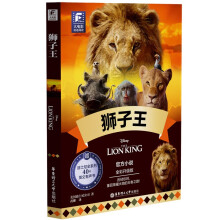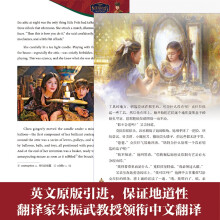1 Introductions
1.1 Principles of Concrete-Filled Steel Tube (CFST)
1.2 Applications and Developments of CFST
1.3 Researches on CFST
1.4 Connections in CFST Structures
1.4.1 Through-Beam Joint and Through-Column Joint
1.4.2 Exterior Stiffening Ring Joint (External Diaphragm Joint)
1.4.3 Diaphragm-Through Joint
1.4.4 Vertical Stiffener Joint
1.4.5 Welded Haunch Joint
1.4.6 Anchored T-Plate Joint
1.4.7 Bolted Joint
1.5 Reinforced CFSTs
1.5.1 I: CFST Reinforced by Inner Steel Tube (Including CFDST)
1.5.2 H: CFST Reinforced by Inner Section Steel
1.5.3 III: CFRP-Confined CFST
1.5.4 IV: Hollow CFDST
1.5.5 Applications of CFDST
1.6 Monograph Organization
References
2 Analysis of Axial Bearing Capacity
2.1 Tests and Phenomena
2.2 Calculation by Limit Equilibrium Method
2.2.1 Limit Equilibrium Method
2.2.2 Unified Strength Theory
2.2.3 Elastoplastic Limit Analysis
2.3 Calculation by Unified Theory of CFST
2.3.1 Method of Unified Theory of CFST
2.3.2 Equivalent Confinement Coefficient
2.3.3 Calculation Formulas
2.4 Validation and Analysis
2.5 Parametric Study for CFDST Column
2.5.1 Influence of Inner Tube
2.5.2 A Simple Model Used in Optimum Design
2.5.3 Contribution of Inner Tube
2.6 Summary
References
3 Compressive Stiffness of CFDST Columns
3.1 Compressive Stiffness of CFST
3.2 Simple Superposition Method
3.3 Calculation by Unified Theory of CFST
3.4 Elasticity Solutions
3.4.1 Basic Model
3.4.2 Energy Theory
3.5 Verification of Theoretical Calculations
3.5.1 Comparison with Experimental Results
3.5.2 Parametric Study
3.6 Summary
References
4 Frame Joint Forms in CFDST Structures
4.1 Ring-Beam Joint with Discontinuous Outer Tube
4.2 External Diaphragm Joint
4.3 Vertical Stiffener Joint
4.4 Anchored Steel Beam Joint
4.5 High Strength Bolts-T-Plate Joint
4.6 Summary
References
5 Ring Beam Joints to RC Beams
5.1 Description of Connection System
5.2 Test Specimens and Material Properties
5.3 Test Setup and Measurement Scheme
5.4 Discussion of Test Results
5.4.1 Failure Modes
5.4.2 P-A Hysteresis Loops
5.4.3 Analysis of Ductility
5.4.4 Load-Strain Curves
5.5 FE Modeling
5.5.1 Comparison between Test and FEM Results
5.5.2 Parametric Studies
5.6 Summary
References
6 Vertical Stiffener Joints to Steel Beams
6.1 Structure Forms and Features of the Connection
6.2 Test Specimens and Material Properties
6.3 Test Setup and Measurements
6.4 Discussion of Test Results
6.4.1 Failure Modes
6.4.2 P-A Hysteresis Loops
6.4.3 Parametric Analysis
6.4.4 Analysis of Ductility
6.4.5 Degradation
6.4.6 Energy Dissipation
6.5 Finite Element Modeling
6.5.1 Establishment of Finite Element Model
6.5.2 Analysis of Loading Process
6.5.3 Verification of Finite Element Modeling
6.6 Calculation of Bearing Capacity
6.6.1 Shear Force Transfer Model and Shear Resistance in Panel Zone
6.6.2 Moment Transfer Model and Bending Resistance
6.6.3 Validation and Analysis
6.6.4 Discussions
6.7 Summary
References
7 External Diaphragm Joints to Steel Beams
7.1 Description of the Connection System
7.1.1 Design of New External Diaphragm Joints
7.1.2 Fabrication of Specimens
7.2 Material Properties and Test Procedures
7.2.1 Material Properties
7.2.2 Test Apparatus and Procedures
7.3 Experimental Observations and Failure Modes
7.3.1 Beam Failure Mode
7.3.2 Column Failure Mode
7.4 Test Results and Discussion
7.4.1 Hysteresis Loops
7.4.2 Analysis of Ductility
7.4.3 Effects of Different Test Parameters
7.4.4 Stiffness Degradation
7.4.5 Energy Dissipation
7.5 Data Analysis Based on DSCM
7.5.1 DSCM and Measurement Setup
7.5.2 Data Processing
7.5.3 Joint Stiffness Analysis
7.5.4 Relationship of Shear Force-Deformation in Panel Zone (V-y)
7.5.5 Strain Nephogram in Panel Zone
7.6 Summary
References
8 Anchored Web Joints with Haunches
8.1 Test Overview
8.1.1 Specimens Design
8.1.2 Materiai Properties
8.1.3 Test Device and Loading System
8.1.4 Arrangement of Measuring Points
8.2 Numerical Analysis Model
8.2.1 Constitutive Model
8.2.2 Element Selection and Division
8.2.3 Interactions, Boundary Conditions and Loading Modes
8.3 Comparison Between Test and Numerical Simulation Results
8.3.1 Destruction Process
8.3.2 Strain and Stress Responses
8.3.3 Hysteresis Loops
8.3.4 Joint Energy Dissipation Capacity
8.4 Parametric Analysis
8.4.1 Influence of Joint Construction
8.4.2 Influence of Steel Beam Strength
8.4.3 Influence of Beam-to-Column Linear Bending Stiffness Ratio (K)
8.4.4 Influence of Concrete Strength
8.4.5 Influence of Axial Compression Ratio
8.5 Summary
References
9 Blind Bolted T-Plate Joints in Prefabricated Construction
9.1 Specimens Design
9.2 Material Properties
9.3 Test Setup and Loading Scheme
9.3.1 Test Setup
9.3.2 Arrangement of Measurement Points ..
9.4 Test Process and Phenomena
9.4.1 Failure Process
9.4.2 Hysteresis Loops and Energy Dissipation Capacity
9.4.3 P-A Skeleton Curves
9.4.4 Bearing Capacity and Ductility
9.4.5 Strain Responses of Inner Steel Tubes
9.5 Finite Element Modeling
9.5.1 Establishment of Finite Element Model
9.5.2 Simulation of Failure Modes
9.5.3 Comparison of Ultimate Bending Capacity Between Test and FEA Results
9.5.4 Stress Responses of Steel Tubes and Bolts
9.6 Calculation of Ultimate Bending Capacity
9.6.1 Establishment of a Tensile T-Plate Model
9.6.2 Working Mechanism of Stiffening Ribs
9.6.3 Verification by Test Data and Numerical Results
9.6.4 Analysis of Parameter Influence
9.7 Summary
References
10 Conclusions and Prospects
10.1 Conclusions
10.2 Prospects
展开










